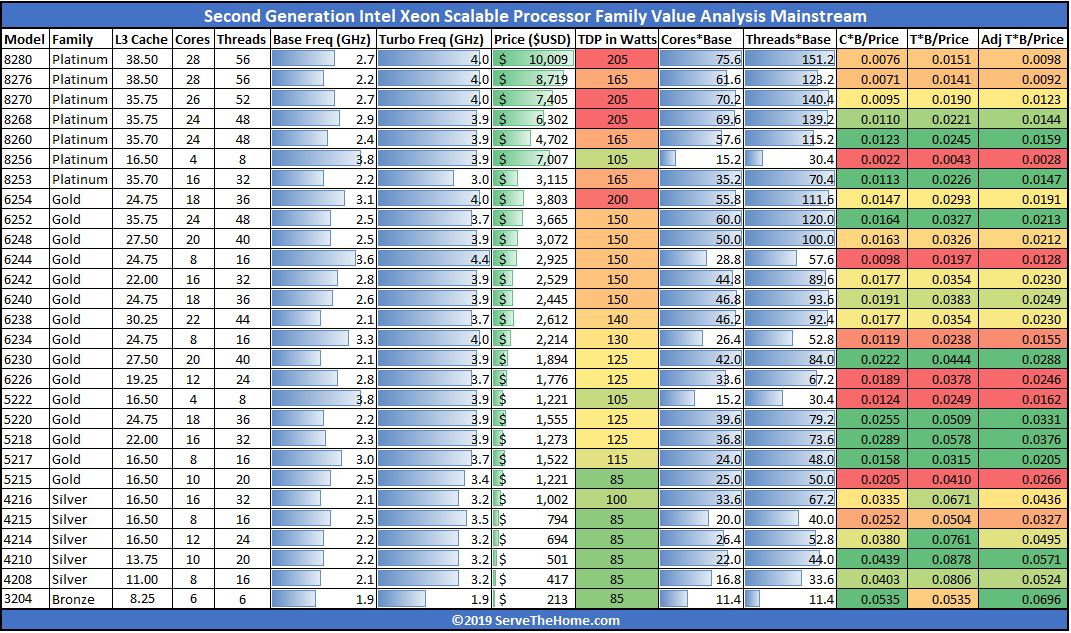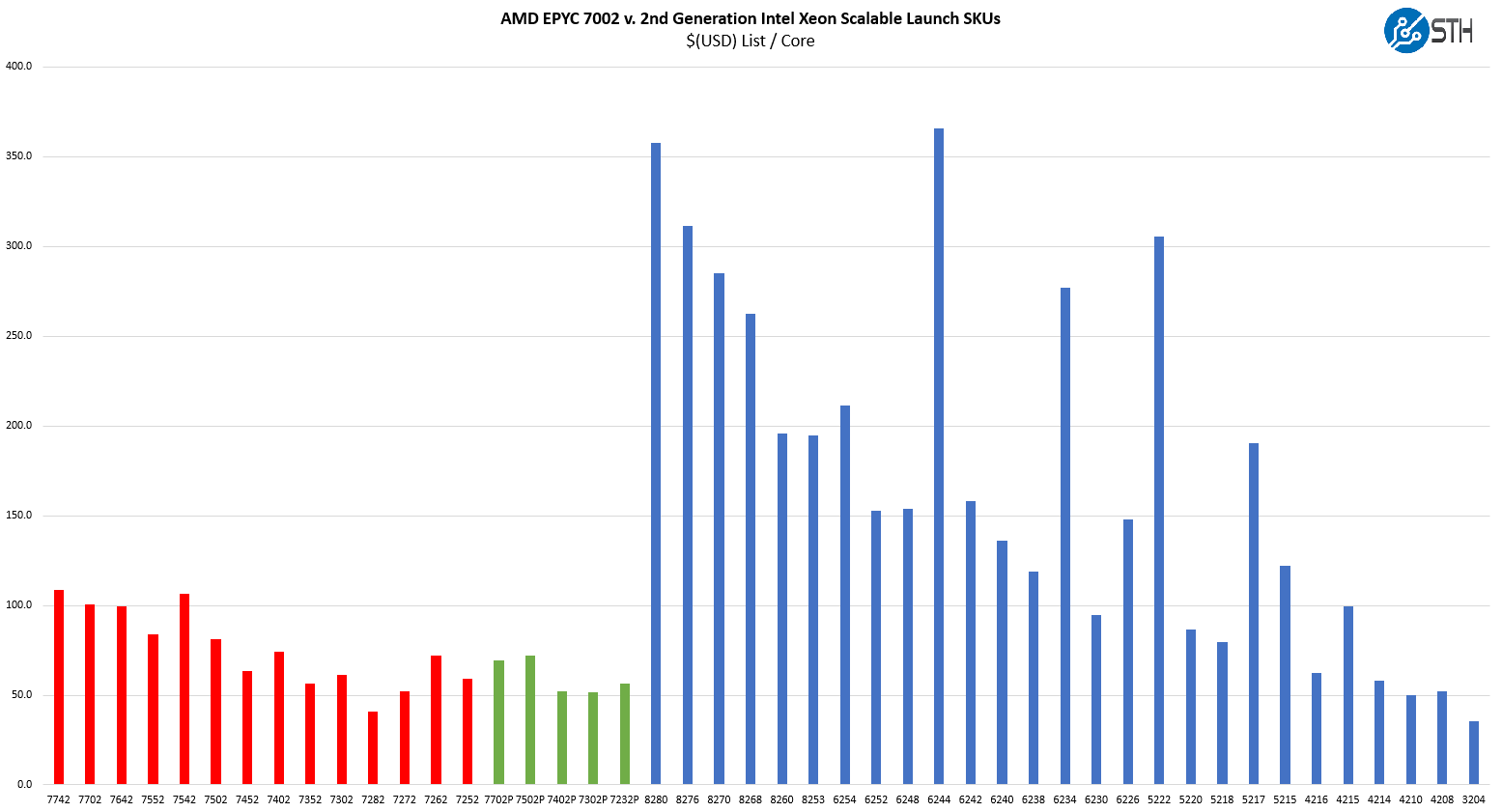Intel Xeon Gold 6252 Market Positioning
Thes chips are not released in a vacuum instead, they have competition on both the Intel and AMD sides. When you purchase a server and select a CPU, it is important to see the value of a platform versus its competitors.
Quad Intel Xeon Gold 6252 v. Intel Alternatives
Competition in the SKU stack comes in a number of forms. Here is a chart from our Second Generation Intel Xeon Scalable SKU List and Value Analysis piece.

As one can see, this is one of the better values when looking at how much one pays for a GHz of Xeon core. That means it is one of the better values in the current 2nd generation Intel Xeon Scalable SKUs.
The four-socket configuration is important. One can use lower cost and capacity DIMMs or scale to higher-end configurations with 128GB DCPMMs for persistent storage. When one scales to more sockets, platform expansion capabilities become more noticeable. Some hyper-scale customers are using 4P servers to connect large GPU arrays to increase density.
The delta between the Gold 6252 and the Platinum 8260 performance is noticeable. If we are just looking at CPU prices, then we would say it is not justified. In the context of a total system cost, for many, the extra performance is worth around $1000 per CPU more.
Intel Xeon Gold 6252 v. AMD Alternatives
This is a very tough comparison at the moment. AMD has a more modern architecture on a more modern process. AMD is also using extremely aggressive pricing. To illustrate this, here is what the AMD v. Intel lineups look like on a cost per core basis:

The 24-core Intel Xeon Gold 6252 is around $150 per core while AMD’s 64-core offerings are around $100 per core. As we saw, the AMD EPYC 7742 is faster than two Xeon Gold 6252’s. It also offers PCIe Gen 4 which means it offers more PCIe bandwidth as well. The AMD offering also has up to 4TB of memory support per socket in 8-channel memory while the Gold 6252 is 1TB with 6-channel memory. Two Xeon Gold 6252’s have a total of 2TB of memory support in 12 DDR4 channels. For some memory bandwidth bound workloads, that may be preferable.
AMD does not have Optane DCPMM support, nor support for AVX-512 and Intel DL Boost (VNNI). We did see features like bmi2 make their introduction in the EPYC 7002 “Rome” series, but there is still a gap with newer instructions.
We are at the point in this comparison where discounting can make Gold 6252 CPUs a viable competitor to AMD’s newer chips especially when taken into the context of an entire system.
Final Words
Overall, the quad Intel Xeon Gold 6252 setup is impressive. It offers great performance and has a lot of expandability. These are also some of the more reasonably priced CPUs in Intel’s current 2nd generation Xeon Scalable lineup at list prices. With discounting, this can be a key SKU to attack AMD on the price/ performance scale offering a different feature set.
We wish Intel opened memory capacity support up to 2TB for these chips which would allow them to have more interesting memory combinations, especially with Optane DCPMM. Optane support is a killer feature for some applications and the Gold 6252 can fit nicely in many of those same applications.
These are CPUs we wish we had tested in the summer of 2019. For many organizations that are set on using Intel Xeon CPUs, we think that the Gold 6252 is a particularly strong option in dual and quad-socket configurations.




Any chance we could get some power consumption numbers to go with this? It would be interesting to see a comparison of efficiency on these vs intel’s 205W CPUs.
Do you have any plans to review the 6254 in dual and quad setups in the near future?
Hi thetrashcan – I totally agree. We usually do power on 4P systems in the system itself. In future 4P reviews, perhaps we change the format to include this.
mafigo – I would be OK with STH doing that, but we do not have the parts to do so.